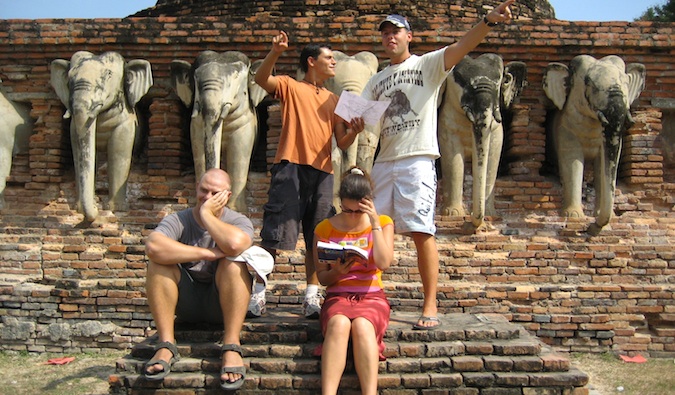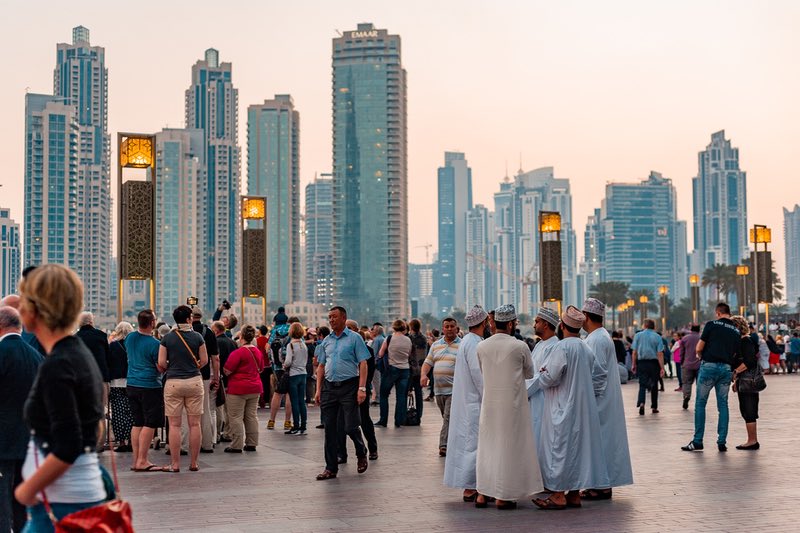I still remember the first time I started planning a trip around the world. Honestly, I had no idea what I was doing!
When I decided to quit my job and explore the world, I wandered into a bookstore and bought Lonely Planet’s Southeast Asia on a Shoestring. That little guidebook felt like my first real step into long-term travel. It made everything feel real, like my dream was finally within reach.
But, as helpful as the book was, it didn’t exactly teach me how to plan a trip around the world. Back then, travel blogs, apps, and sharing economy websites weren’t what they are today. I was pumped to go, but completely lost. I had to figure things out as I went along, hoping I didn’t miss any important steps.
Planning a trip, especially one that big, can feel totally overwhelming. Where do you start? What comes first? What’s next?
When you haven’t done something like this before, it’s easy to get caught up in all the options. Between blogs, social media, and guidebooks, there’s more information than ever — but sometimes that just makes it harder to figure out where to begin.
After over a decade of traveling, I’ve learned a thing or two about trip planning. I’ve organized countless vacations for myself, friends, family, and even groups. It wasn’t always smooth sailing at the start, but after learning a few things the hard way, I put together a simple, foolproof checklist that helps me stay on track every time.
Let’s be real — no one wants to arrive at their destination only to realize they forgot something important. I know I don’t, and I’m sure you don’t either!
I get asked a lot, “Matt, how do I actually plan a trip?” So, to make it easy, I’ve put together a step-by-step guide to help you plan any trip, no matter how long you’re going for. Just follow these steps and you’ll be off exploring in no time!
Step 1: Pick a Destination

Deciding where you want to go is the first step. It turns a vague “I want to travel” into something real and gives you a goal to work toward.
It’s much easier to get excited about “I’m going to Paris this summer” than “I’m going to Europe.” The more specific you are with your plans, the more concrete and achievable they become. Narrow down your destination, and you’ll feel more committed and ready to start planning for real.
Step 2: Figure Out How Long You’ll Be Gone
How much does a trip cost? Well, that depends on how long you’re traveling!
Are you going for a week, a month, or even a year? The length of your trip has a huge impact on how much money you’ll need. Once you know your destination, figure out how many days you’ll be gone. For example, saying, “I’m going to Paris for 10 days” helps you get a clear picture of your budget.
Step 3: Research the Costs
Now that you know where you’re going and how long you’ll be there, it’s time to get an idea of what your trip will actually cost.
Do you want to backpack or stay in luxury hotels? How much do meals, attractions, and activities cost in your chosen destination?
To figure this out, you can:
- Buy a guidebook.
- Google the costs of specific activities you want to do.
- Check out travel blogs for budgeting advice.
No need to overcomplicate things here. Stick to those simple resources, and you’ll have a solid idea of how much you need to save.
Step 4: Start Saving

Now that you’ve got an estimate, it’s time to save! First, take a good look at where your money’s going right now. Write down your expenses and see where you can cut back. It might be small stuff like daily coffee or snacks, but those little things add up fast.
Say you need $2,000 for your trip and you have eight months to save — that’s only about $8 a day. Skipping that fancy coffee could make a huge difference!
Step 5: Get a Travel Rewards Credit Card
While you’re saving, get a travel rewards credit card so you can earn points for free flights and hotels. Most cards offer sign-up bonuses that can score you a free flight anywhere in the world!
Pick a card that fits your travel goals. Want free flights? Get an airline card. Prefer hotel perks? Grab a hotel card. The sooner you start collecting points, the more free travel you’ll rack up!
Step 6: Get a No-Fee ATM Card
You’ll need cash when you’re traveling, and ATM fees can sneak up on you, especially if you’re away for a while. Avoid giving your money to banks by getting a no-fee ATM card. I use Charles Schwab, but many banks have similar options. You’ll save those pesky fees and have more cash for fun!
Step 7: Stay Motivated
Planning a trip can be exhausting, especially if it’s still months away. It’s easy to get discouraged, but stay inspired! Join online travel communities (like The Nomadic Network) or attend events to meet other travelers. It’s a great way to stay excited and keep your dream alive.
Step 8: Look for Last-Minute Deals
Before booking your flight, check for last-minute deals. Maybe there’s a great offer to Berlin or a heavily discounted cruise to Greece. If you’re flexible with your destination or dates, you might just find an amazing deal that wasn’t on your radar.
Step 9: Book Your Flight

Once you’ve earned enough miles, it’s time to book your flight! My go-to sites for finding cheap airfare are Skyscanner and Google Flights. Booking about 2-3 months in advance is usually the sweet spot for the best prices.
Step 10: Book Accommodation

If your trip is under two weeks, you might want to book all your accommodations in advance, especially during high season. For longer trips, I usually just book the first few nights and leave the rest open. That way, you have flexibility to adjust plans once you’re on the ground.
Step 11: Plan Activities
Now that your big stuff is booked, it’s time to plan what you’ll do! Make a rough list of the activities you don’t want to miss, and see if any require reservations or tickets in advance. Prioritizing your must-dos will help you stay on budget and ensure you don’t miss out.
Step 12: Sell Your Stuff (If You’re Going Long-Term)
If you’re planning a long-term trip (like six months or more), consider selling things you won’t need. Sites like eBay, Craigslist, or Facebook Marketplace are great for this. If you’re just going away for a short time, feel free to skip this step!
Step 13: Automate Your Bills
m
Going paperless and setting up automatic bill payments is a must if you’ll be away for a while. For longer trips, you might also want to cancel your phone plan and switch to SIM cards abroad.
Step 14: Pack Smart
Packing can be tricky, but less is definitely more! Stick to essentials and avoid overpacking. A 45L bag is plenty unless you’re heading to extreme climates. Pro tip: packing cubes can help keep everything organized!
Step 15: Get Travel Insurance
Travel insurance might seem like an unnecessary expense, but trust me — it’s worth it. From medical emergencies to lost luggage or flight cancellations, insurance has your back when things go wrong.


